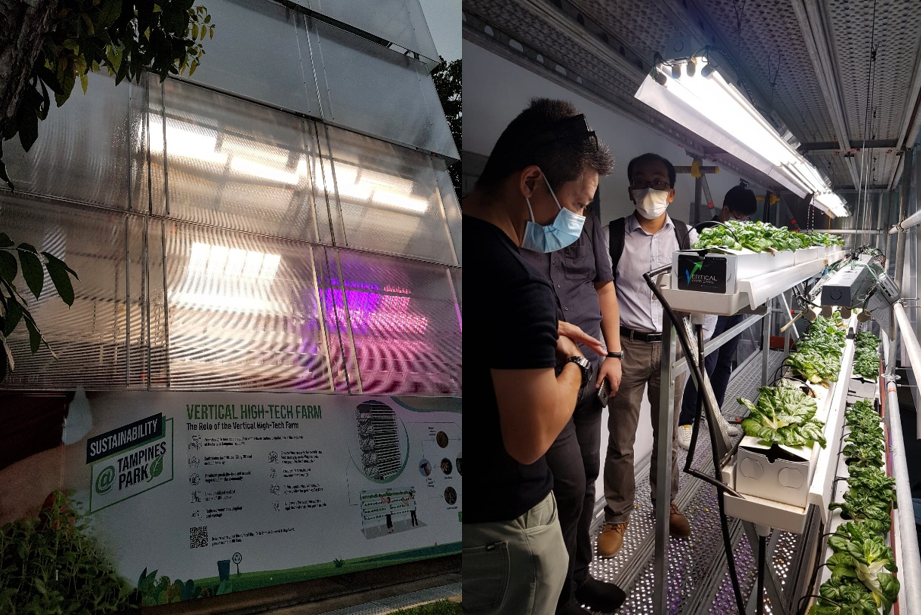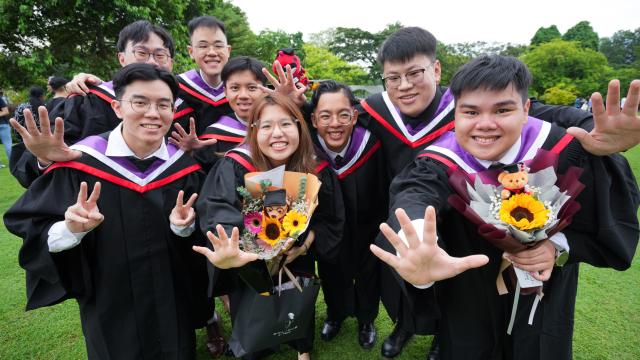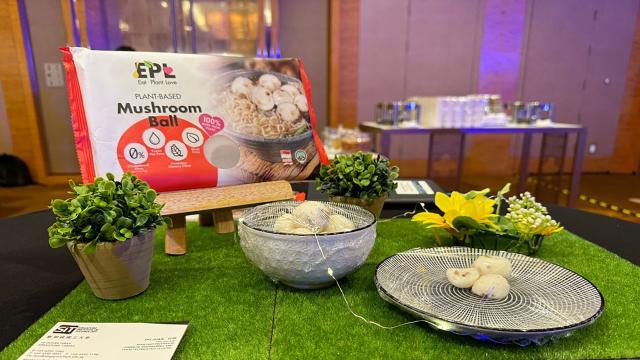In the near future, you could very well be munching on vegetables harvested from the side-facades of HDB blocks or plots of land below overhead train tracks and bridges. This is thanks to a project by researchers from SIT, which aims to develop a sustainable urban farming module that can be deployed at unused urban sites across Singapore.
The project was one of 12 which were, in total, awarded over S$23 million in funding from the Singapore Food Agency under the grant call for research and development (R&D) in 'Sustainable Urban Food Production'. The grant call aims to develop the local agri-tech R&D ecosystem and sustainable urban food solutions to support Singapore’s '30 by 30' goal for food security, and provide funding support for innovative research projects that address challenges facing the tropical aquaculture and urban agriculture industries.
 The side-facades of HDB blocks can potentially be used to grow vertical farms.
The side-facades of HDB blocks can potentially be used to grow vertical farms.
Maximising Crop Growth
Called the "Urban-metabolic Farming-module" or UmFm, the project is a collaboration between SIT, Tohoku University, local urban farming company Netatech, and Tampines Town Council. The cross-cluster team behind the project comprises A/Prof Soh Chew Beng, Asst Professor Chien Szu-Cheng and Asst Prof An Hui (all from Engineering cluster), A/Prof Ryan Tay (Chemical Engineering and Food Technology cluster), Asst Prof Donny Soh (Infocomm Technology cluster) and Asst Prof Yeh I-Ling (Health and Social Sciences cluster).
Before designing each module, an environmental assessment is conducted through simulation, which is used to study the air flow, as well as the irradiance (amount of light) in the growth structure. Each module has four critical features:
- Engineered solar film materials – which optimise natural sunlight utilisation (brightness and solar heat) to increase the crop yield and achieve self-sufficiency in staple Asian greens.
- A cost-effective and sustainable UmFm unit – built for growth with minimal use of space and energy demands, as compared to indoor farming to enhance the utilisation of space.
- Customised nutrient recipe coupled with optimised irrigation – to better support the growth of crops and promote healthy growth.
- Artificial Intelligence – such as sensors, which test the humidity, pH and temperature to understand how they correlate to the growth stages of crops, to optimise the growth system in the whole crop life cycle.
Commercial and Community Benefits
The first version of a vertical high-tech farm has been set up by NetaTech on the side-facade of a HDB block in Tampines Eco Town. Other possible sites include terrace terrain and walkways at housing estates. In fact, the team is also testing an UmFm module in SIT@Dover at the terrace’s side-path. The UmFm units could be operated by commercial farmers, while bringing other benefits to the community.

The vertical high-tech farm on the side-facade of a HDB block in Tampines Eco Town.
"With this unit, we could bring farms closer to home," said A/Prof Soh, Programme Leader, Sustainable Infrastructure Engineering (Building Services). "It could create job opportunities for home-makers and retirees at close proximity to their home – meeting the food, economic security, and social needs of Singapore. The local crop produce will cut down the cost (involved in) storage and transportation, making it more economically viable for local residents."
Find out more in the news clip:















![[FA] SIT One SITizen Alumni Initiative_Web banner_1244px x 688px.jpg](/sites/default/files/2024-12/%5BFA%5D%20%20SIT%20One%20SITizen%20Alumni%20Initiative_Web%20banner_1244px%20x%20688px.jpg)


